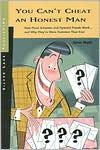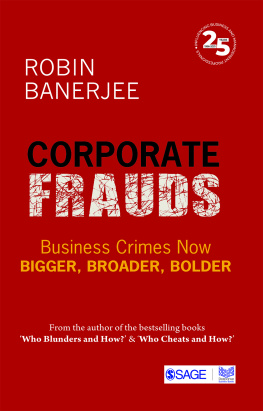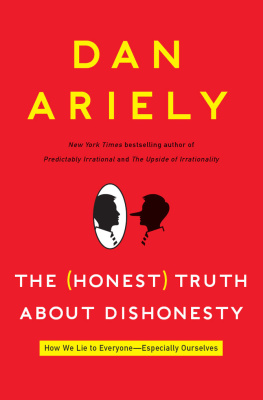James Walsh - You Cant Cheat an Honest Man: How Ponzi Schemes and Pyramid Frauds Work...
Here you can read online James Walsh - You Cant Cheat an Honest Man: How Ponzi Schemes and Pyramid Frauds Work... full text of the book (entire story) in english for free. Download pdf and epub, get meaning, cover and reviews about this ebook. year: 2009, publisher: Silver Lake Publishing, genre: History. Description of the work, (preface) as well as reviews are available. Best literature library LitArk.com created for fans of good reading and offers a wide selection of genres:
Romance novel
Science fiction
Adventure
Detective
Science
History
Home and family
Prose
Art
Politics
Computer
Non-fiction
Religion
Business
Children
Humor
Choose a favorite category and find really read worthwhile books. Enjoy immersion in the world of imagination, feel the emotions of the characters or learn something new for yourself, make an fascinating discovery.
- Book:You Cant Cheat an Honest Man: How Ponzi Schemes and Pyramid Frauds Work...
- Author:
- Publisher:Silver Lake Publishing
- Genre:
- Year:2009
- Rating:5 / 5
- Favourites:Add to favourites
- Your mark:
- 100
- 1
- 2
- 3
- 4
- 5
You Cant Cheat an Honest Man: How Ponzi Schemes and Pyramid Frauds Work...: summary, description and annotation
We offer to read an annotation, description, summary or preface (depends on what the author of the book "You Cant Cheat an Honest Man: How Ponzi Schemes and Pyramid Frauds Work..." wrote himself). If you haven't found the necessary information about the book — write in the comments, we will try to find it.
You Cant Cheat an Honest Man: How Ponzi Schemes and Pyramid Frauds Work... — read online for free the complete book (whole text) full work
Below is the text of the book, divided by pages. System saving the place of the last page read, allows you to conveniently read the book "You Cant Cheat an Honest Man: How Ponzi Schemes and Pyramid Frauds Work..." online for free, without having to search again every time where you left off. Put a bookmark, and you can go to the page where you finished reading at any time.
Font size:
Interval:
Bookmark:
James Walsh
SILVER LAKE PUBLISHING
LOS ANGELES, CA ABERDEEN, WA
You Cant Cheat an Honest Man
How Ponzi Schemes and Pyramid Frauds Workand Why Theyre More Common Than Ever
Silver Lake Publishing
111 East Wishkah Street
Aberdeen, WA 98520
.
Box 29460
Los Angeles, California 90029
All rights reserved. No part of this book may be reproduced, stored in a retrieval system or transcribed in any form or by any means (electronic, mechanical, photocopy, recording or otherwise) without the prior written permission of Silver Lake Publishing.
Library of Congress Catalog Number: PendingJames Walsh
You Cant Cheat an Honest Man
How Ponzi Schemes and Pyramid Frauds Workand Why Theyre More Common Than Ever
ISBN: 1-56343-169-6
Printed in the United States of America. Table of Contents Introduction
Some Background to the Current Situation ...1
Part One: How the Schemes Work
Part Two: Why the Schemes Work
Part Three: Contemporary Variations
Part Four: What to Do if Youve Been Scammed
ConclusionThe Mother of All Ponzi Schemes ...319 INTRODUCTION
Introduction: Some Background to the Current Situation
Ponzi schemes have a strongalmost addictivegrasp on the people who perpetrate them and the people who invest in them. Why? Consider the original scheme.
Carlo Ponzi was a loser. He knew this. Everyone who knew him knew this. But he was desperate to be something more.Floating from job to job in the hard-scrabble Boston of the early 1920s, the formal little man (he was 52" and irregularly employed but elegantly dressed) was, in one sense, loosely moored to reality. He would stay up late nights dreaming up ways to get rich.
Ponzi had been born in Italy but arrived in New York in 1893 at the age of 15. He immediately set to the task of finding a fast way to make a lot of money. His impatience lead him into the most basic kind of swindlesand an itinerant lifestyle. He served short stretches of time in prison in both Canada (for mail fraud and passing bad checks) and Atlanta (for an illegal immigration scheme). He ended up moving to Boston in 1919.
Boston has always been a particularly tough place to be poor. Frustrated by the luxury he saw being casually enjoyed by the local swells, Ponzi kept dreaming of ways to take his piece. And he wrote letters home to various members of his extended family. Living in the aftermath of World War I, they were anxious for their traveling son to strike it rich in the New World.
His letters home provided Ponzi with the origin of what he would laterfamouslycall his Great Idea. Although Ponzi himself probably couldnt describe it, the scheme was essentially a crude form of currency exchange speculation.
In the early 1900s, a person could enclose a coupon with a letter to save a correspondent the cost of return postage. An organization called the International Postal Union issued postal reply coupons that could be traded in for postage stamps in a number of countries around the world.
Ponzi figured that the coupons could be bought on the cheap in nations with weak economies and redeemed for a profit in the United States. He decided to stake some of his hard-earned money on a test of his Great Idea. But he quickly discovered that there was a lot to the scheme that he hadnt anticipated. Most importantly, the red tape among postal organizations absorbed his profits. Delays prevented him from moving enough money through the system to make his plan work.
But, as his Great Idea wilted, something unexpected bloomed. Whenever he discussed the scheme with people, they quickly caught on and seemed interested in what he had to say. Friends and family members would ask himunprovokedhow his tests were going. People were interested in the investment because it made sense to them...even though it didnt work.
So, near the end of 1919, Ponzi made a decision which would make his name an icon of modern-day thievery. He stopped buying international postal coupons and dealing with endless bureaucracyand focused instead on bringing in investors.
The Original Ponzi Scheme is BornIn December 1919, with capital of $150, Ponziwhod started using the first name Charlesbegan the business of borrowing money on promissory notes. He started out by inviting friends and relatives to get in on the ground floor of what he dubbed the Ponzi Plan.
Ponzi claimed that he was making 100 percent profit on his money in a few months. His problem was that he didnt have enough capital to exploit postal rate discrepancies fully. Because there was room, he was willing to include investors on his deals.
Like many of his disciples in years since, Ponzi targeted people with the same ethnic background as his own.
Ponzi made his presentation...his pitch...shine. He would explain that he had received a letter that contained a reply coupon that cost the equivalent of one cent in Spain but could be exchanged for a six-cent stamp in the U.S. Why cant I buy hundreds, thousands, millions of these coupons? Ill make five cents on every one, hed ask convincingly. His tone was described as something between a plea and a command.
Whatever it was, it worked. A few wary acquaintances decided to take a gamble, and Ponzi collected about $1,250. Early investors included extended family members, his parish priest, and players at the local bocce court. Ninety days later, he returned $750 in interest. Stunned investors told their friends and soon Ponzis office was filling with people eager to fork over money. He promptly moved his operation to a tony address in the citys financial district.
With a written promise to repay $150 in 90 days for every $100 loaned, Ponzi convinced thousands of people to lend him millions of dollars. He placated investors fears by paying his 90-day notes in full at the end of 45 days. Within eight months, hed taken in $9 million, for which hed issued notes with a paper value of $14 million. He paid his agents a commission of 10 percent. Calculating the 50 percent promised to lenders, every loan paid in full would cost him 60 percent.
But Ponzis financial method was not based on actual earnings. Instead, it used incoming investors to pay the returns promised to earlier investors. Although he was cash-rich, Ponzi never actually made any money. As one court would later point out: He was always insolvent, and became daily more so, the more his business succeeded. He made no investments of any kind, so that all the money he had at any time was solely the result of loans by his dupes.
In time, Ponzi was taking in $200,000 a day...and paying out dividends of 50 percent in 90 days. He later upped the promised payout to 100 percent in three months. Investors literally lined up at his offices to invest in his company.
Keeping Up AppearancesPonzi was a genius about maintaining certain parts of his scheme. One example: When investors went into Ponzis offices to redeem their notes, they had to walk all the way to the back of the place, to one of two or three redemption windows. There were usually long lines at these windows.
Once the investors had their money, they had to walk past dozens of investment windows, with shorter lines and eager people investing hundreds and thousands of new dollars. Most didnt make it all the way out the front door again. Theyd reinvest.
At the height of his liquidity, Ponzi went on manic shopping sprees, buying scores of suits, dozens of gold-handled canes, diamonds for his wife, limousines and a 20-room mansion in the Boston suburb of Lexington. As would hold true for many of the con men whod follow in his steps, Ponzi seemed most in his element spending money.
Font size:
Interval:
Bookmark:
Similar books «You Cant Cheat an Honest Man: How Ponzi Schemes and Pyramid Frauds Work...»
Look at similar books to You Cant Cheat an Honest Man: How Ponzi Schemes and Pyramid Frauds Work.... We have selected literature similar in name and meaning in the hope of providing readers with more options to find new, interesting, not yet read works.
Discussion, reviews of the book You Cant Cheat an Honest Man: How Ponzi Schemes and Pyramid Frauds Work... and just readers' own opinions. Leave your comments, write what you think about the work, its meaning or the main characters. Specify what exactly you liked and what you didn't like, and why you think so.









